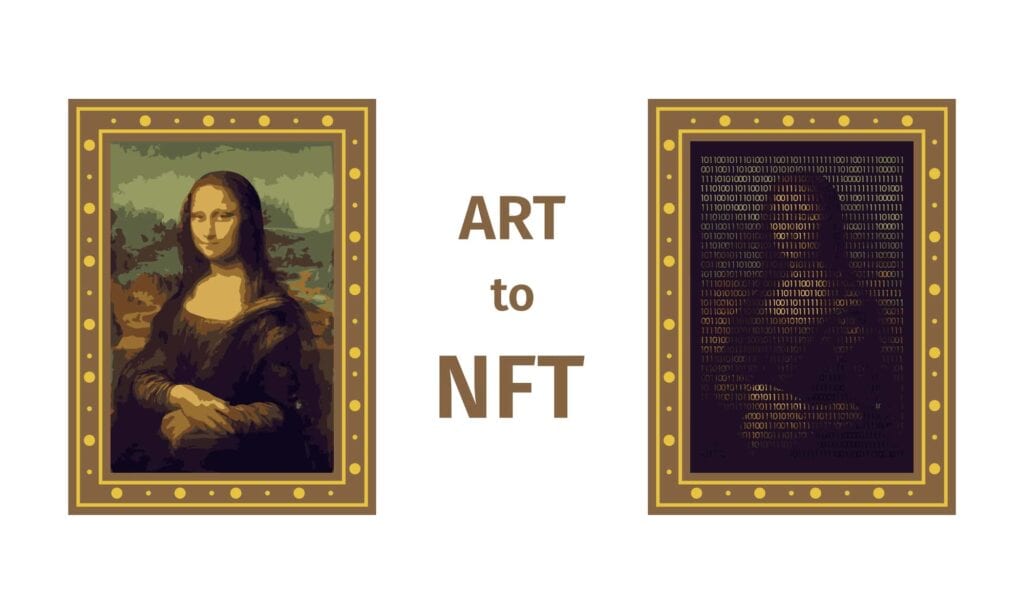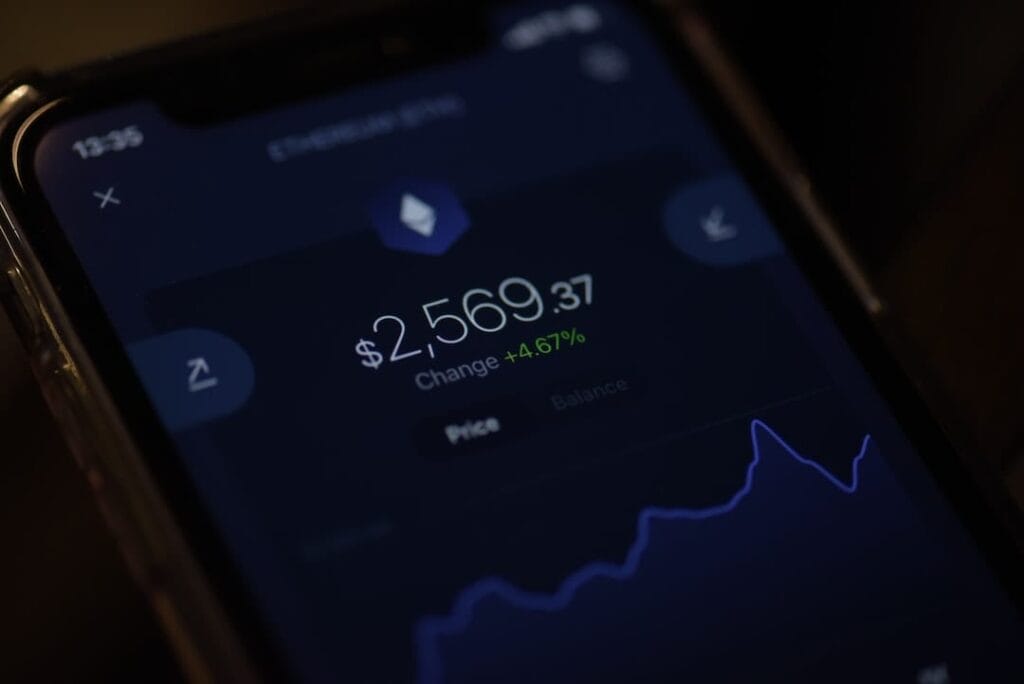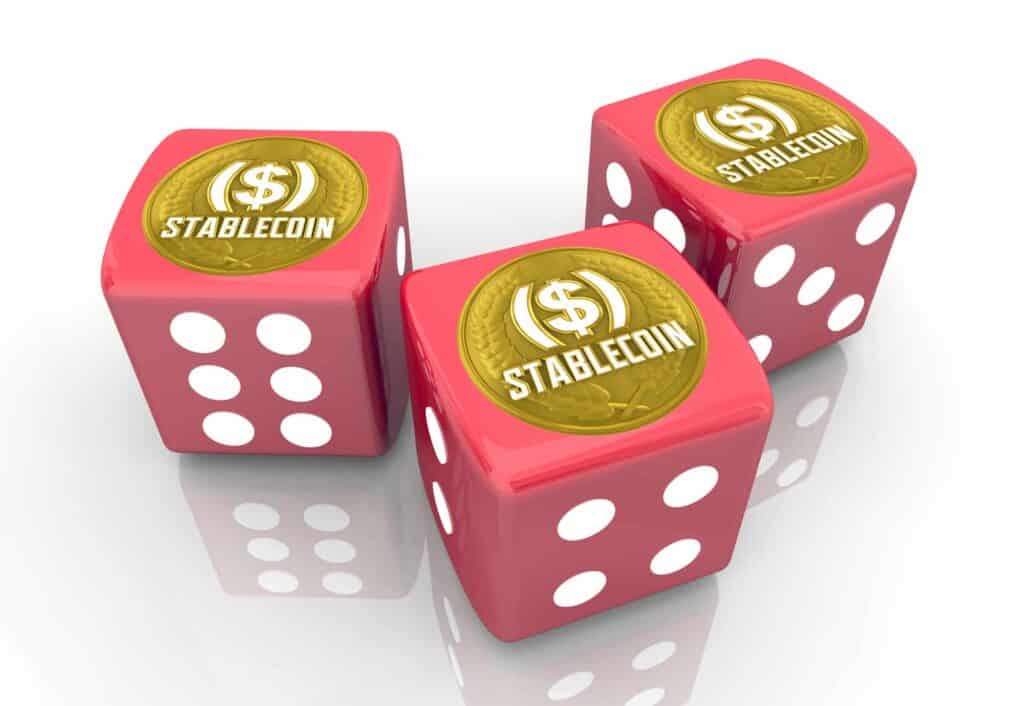NFTs, or non-fungible tokens, have taken the digital world by storm in recent years. But what exactly are they and how do they work? In simple terms, NFTs are unique digital assets that are stored on a blockchain, typically the Ethereum blockchain. Unlike cryptocurrencies such as Bitcoin or Ethereum, which are fungible and can be exchanged on a one-to-one basis, NFTs are indivisible and cannot be exchanged on a like-for-like basis.
Disclaimer: This information is general in nature and for informational purposes only. It is not personal financial advice and has not taken into account your personal financial position or objectives. Make sure to refer to a licensed financial or tax advisor.
NFTs work by utilizing blockchain technology to create a digital certificate of ownership for a specific asset. This certificate is stored on the blockchain, making it transparent and immutable. Each NFT has a unique identifier that distinguishes it from other tokens, giving it its non-fungible nature. This uniqueness is what gives NFTs their value and appeal.
The rise of NFTs in the digital world has been fueled by several factors. Firstly, the increased interest in digital art and collectibles has created a demand for unique digital assets that can be bought, sold, and traded. NFTs provide a way for artists and creators to monetize their work in the digital realm. Additionally, the transparency and security provided by blockchain technology make NFTs an attractive option for collectors and investors.
Table of Contents
Beyond digital art: Exploring the diverse range of NFT applications
While NFTs gained popularity through their association with digital art, their applications extend far beyond the art world. NFTs have found their way into various industries, including gaming, music, sports, and even real estate.
In gaming, NFTs have revolutionized the concept of in-game assets. Traditionally, players would spend money on virtual items that were owned and controlled by game developers. With NFTs, players can now truly own their in-game assets and have the ability to buy, sell, and trade them on various marketplaces. This has opened up a new world of possibilities for gamers, allowing them to monetize their time and investment in virtual worlds.
In the music industry, NFTs have provided artists with a new way to monetize their work. By creating unique digital collectibles, artists can sell limited edition songs, albums, or even concert tickets directly to their fans. This not only provides a new revenue stream for artists but also allows fans to own a piece of their favorite artist’s work.
Sports memorabilia has also found its way onto the blockchain through NFTs. By turning physical items such as jerseys, trading cards, or game-used equipment into digital assets, sports fans can now own a piece of their favorite team or player’s history. This has created a new market for sports collectibles and has given fans a new way to engage with their favorite sports.
Even the real estate industry has started exploring the potential of NFTs. By tokenizing properties and creating fractional ownership opportunities, NFTs have made it possible for individuals to invest in real estate with smaller amounts of capital. This has the potential to democratize real estate investing and provide new opportunities for individuals who may not have had access to traditional real estate markets.
Passive income opportunities: How NFTs can generate revenue without active management
One of the most exciting aspects of NFTs is their potential to generate passive income. Unlike traditional investments that require active management and monitoring, NFTs can generate revenue without much effort on the part of the owner.
There are several ways in which NFTs can generate passive income. One way is through royalties. When an NFT is sold on a marketplace, the original creator can set a royalty fee that is automatically paid to them every time the NFT is resold in the future. This means that artists and creators can continue to earn income from their work even after it has been sold.
Another way NFTs can generate passive income is through staking or lending. Some NFT projects allow owners to stake their tokens in exchange for rewards. These rewards can come in the form of additional tokens or other benefits within the project ecosystem. Similarly, owners can lend their NFTs to others in exchange for a fee, allowing them to earn income from their assets without giving up ownership.
Examples of successful NFT projects generating passive income include decentralized autonomous organizations (DAOs) that distribute profits to token holders, virtual land marketplaces that generate rental income for landowners, and virtual pet games that allow players to breed and sell rare digital pets.
NFTs in gaming: The potential for in-game assets and virtual real estate
The gaming industry has been quick to embrace NFTs and has seen tremendous growth as a result. Blockchain-based gaming allows players to truly own their in-game assets and gives them the ability to buy, sell, and trade these assets on various marketplaces.
The potential for NFTs in gaming is vast. In addition to traditional in-game items such as weapons or armor, NFTs can represent virtual real estate, characters, or even entire game worlds. This opens up new possibilities for game developers to create immersive experiences and for players to monetize their time and investment in virtual worlds.
One example of a successful NFT gaming project is Axie Infinity. Axie Infinity is a blockchain-based game where players can collect, breed, and battle digital creatures called Axies. Each Axie is an NFT that can be bought, sold, and traded on various marketplaces. Players can earn in-game rewards by participating in battles or breeding rare Axies, and these rewards can be sold for real-world currency.
Another example is Decentraland, a virtual reality platform built on the Ethereum blockchain. In Decentraland, users can buy, sell, and trade virtual land and create unique experiences within the virtual world. The ownership of virtual land is represented by NFTs, allowing users to monetize their creations and participate in the virtual economy.
NFTs in music: How artists can monetize their work through unique digital collectibles
The music industry has also embraced NFTs as a way for artists to monetize their work in the digital realm. By creating unique digital collectibles, artists can sell limited edition songs, albums, or even concert tickets directly to their fans.
The potential for NFTs in the music industry is significant. Artists can create exclusive content that is only available to those who own the corresponding NFT. This can include unreleased songs, behind-the-scenes footage, or even virtual meet-and-greets. By offering these unique experiences, artists can create a new revenue stream and deepen their connection with their fans.
One example of a successful NFT music project is Kings of Leon’s release of their latest album as an NFT. The band released three different types of NFTs, each with different levels of access to exclusive content and perks. Fans could purchase these NFTs and gain access to things like limited edition vinyl records, concert tickets, and even lifetime VIP passes to Kings of Leon shows.
Another example is the artist Grimes, who sold a collection of digital artworks as NFTs. Each artwork was accompanied by a piece of music that was exclusive to the owner of the NFT. The collection sold for millions of dollars, demonstrating the demand for unique digital assets in the music industry.
NFTs in sports: The emergence of sports memorabilia on the blockchain
Sports memorabilia has long been a popular collectible among fans, but NFTs have taken it to a whole new level. By turning physical items such as jerseys, trading cards, or game-used equipment into digital assets, sports fans can now own a piece of their favorite team or player’s history.
The potential for NFTs in the sports industry is immense. NFTs allow fans to own and trade digital representations of iconic sports moments, autographed items, or even virtual experiences with their favorite athletes. This creates a new market for sports collectibles and provides fans with a new way to engage with their favorite sports.
One example of a successful NFT sports project is NBA Top Shot. NBA Top Shot is a blockchain-based platform that allows fans to buy, sell, and trade officially licensed NBA collectibles. These collectibles are in the form of NFTs and represent iconic moments from NBA games, such as dunks or game-winning shots. The demand for these digital collectibles has been overwhelming, with some moments selling for hundreds of thousands of dollars.
Another example is Sorare, a fantasy football game that uses NFTs to represent players. Users can buy, sell, and trade these player cards and use them to build their fantasy teams. The performance of the real-life players in actual football matches determines the performance of the virtual teams in the game. This creates a unique intersection between the world of sports and blockchain technology.
NFTs in real estate: The potential for fractional ownership and property investment
The real estate industry has also started exploring the potential of NFTs. By tokenizing properties and creating fractional ownership opportunities, NFTs have made it possible for individuals to invest in real estate with smaller amounts of capital.
The potential for NFTs in real estate is significant. Fractional ownership allows individuals to invest in high-value properties that would otherwise be out of reach. By dividing the ownership of a property into tokens, investors can buy and sell these tokens on various marketplaces, allowing them to participate in the real estate market without the need for large amounts of capital.
One example of a successful NFT real estate project is The Sandbox. The Sandbox is a virtual world where users can buy, sell, and trade virtual land. Each parcel of land is represented by an NFT, and owners can monetize their land by creating and selling virtual experiences within the virtual world. This has created a new market for virtual real estate and has given individuals the opportunity to invest in digital properties.
Another example is RealT, a platform that allows investors to buy fractional ownership in real-world properties. Each property is tokenized and represented by an NFT, and investors can buy shares of these properties using cryptocurrency. Investors then receive rental income from the properties in proportion to their ownership stake.
NFT marketplaces: Where to buy, sell, and trade NFTs for passive income
There are several NFT marketplaces where individuals can buy, sell, and trade NFTs for passive income. These marketplaces provide a platform for artists, creators, and collectors to connect and transact with each other.
Some of the top NFT marketplaces include OpenSea, Rarible, SuperRare, and NBA Top Shot. OpenSea is one of the largest NFT marketplaces and offers a wide range of digital assets, including art, collectibles, virtual land, and more. Rarible is a decentralized marketplace that allows users to create and sell their own NFTs. SuperRare focuses on digital art and provides a curated selection of high-quality artworks. NBA Top Shot is specifically for NBA collectibles and has gained significant popularity among sports fans.
When buying, selling, or trading NFTs on these marketplaces, it’s important to do thorough research and due diligence. Look for reputable sellers with a track record of successful transactions. Consider factors such as rarity, demand, and historical sales data when determining the value of an NFT. Additionally, be aware of any fees or commissions that may be associated with buying or selling NFTs on these platforms.
NFTs as collateral: The potential for using NFTs as collateral for loans and financing
Another interesting application of NFTs is their potential to be used as collateral for loans and financing. By leveraging the value of their NFT assets, individuals can access capital without having to sell their NFTs.
The potential for NFTs as collateral is significant. Traditional lenders often require physical assets or a strong credit history as collateral for loans. NFTs provide an alternative form of collateral that can be easily verified and valued. This opens up new opportunities for individuals who may not have traditional forms of collateral but have valuable NFT assets.
One example of a successful NFT collateral project is Aavegotchi. Aavegotchi is a blockchain-based game where players can collect, trade, and upgrade digital ghosts called Aavegotchis. Each Aavegotchi is an NFT that can be used as collateral to borrow funds on the Aave lending platform. This allows players to access capital without having to sell their Aavegotchis.
Another example is NFTfi, a decentralized lending platform specifically for NFTs. Users can use their NFTs as collateral to borrow funds from other users on the platform. The value of the NFT determines the amount of funds that can be borrowed, and the borrower must repay the loan with interest within a specified timeframe.
The future of NFTs and their potential for unlocking new passive income opportunities
In conclusion, NFTs have emerged as a powerful tool in the digital world, offering unique opportunities for artists, creators, collectors, and investors. Beyond digital art, NFTs have found applications in gaming, music, sports, real estate, and more. They have the potential to generate passive income through royalties, staking, lending, and other mechanisms. NFTs can also be used as collateral for loans and financing, providing individuals with access to capital without having to sell their assets.
The future of NFTs is promising. As more industries and individuals recognize the value and potential of NFTs, we can expect to see further innovation and growth in this space. NFTs have the potential to unlock new passive income opportunities and reshape the way we think about ownership and value in the digital world. Whether you’re an artist looking to monetize your work, a gamer looking to own virtual assets, or an investor looking for new opportunities, NFTs offer a world of possibilities.
If you’re interested in exploring passive income beyond NFTs and digital art investments, you might want to check out this article on “Passive Income Ideas for Students” from Passive Income Solutions. It offers valuable insights and practical tips on how students can generate passive income while juggling their studies. Whether it’s through online businesses, rental properties, or investing in dividend stocks, this article provides a range of options for students looking to build a passive income stream. Read more
FAQs
What are NFTs?
NFTs or Non-Fungible Tokens are unique digital assets that are stored on a blockchain. They are used to represent ownership of a particular item or asset, such as digital art, music, videos, and more.
How do NFTs generate passive income?
NFTs can generate passive income through various means such as royalties, staking, and lending. Royalties are earned when the NFT is resold, staking involves holding the NFT to earn rewards, and lending involves loaning the NFT to others for a fee.
What are some examples of NFTs that generate passive income?
Some examples of NFTs that generate passive income include CryptoKitties, which allows users to breed and sell virtual cats, and NBA Top Shot, which allows users to buy and sell digital collectibles of NBA highlights.
What are the risks associated with investing in NFTs?
The risks associated with investing in NFTs include market volatility, lack of regulation, and the potential for scams and fraud. It is important to do thorough research and only invest what you can afford to lose.
Can NFTs be used for purposes other than digital art investments?
Yes, NFTs can be used for a variety of purposes such as gaming, virtual real estate, and even physical assets such as real estate and luxury goods. The possibilities for NFTs are endless.







